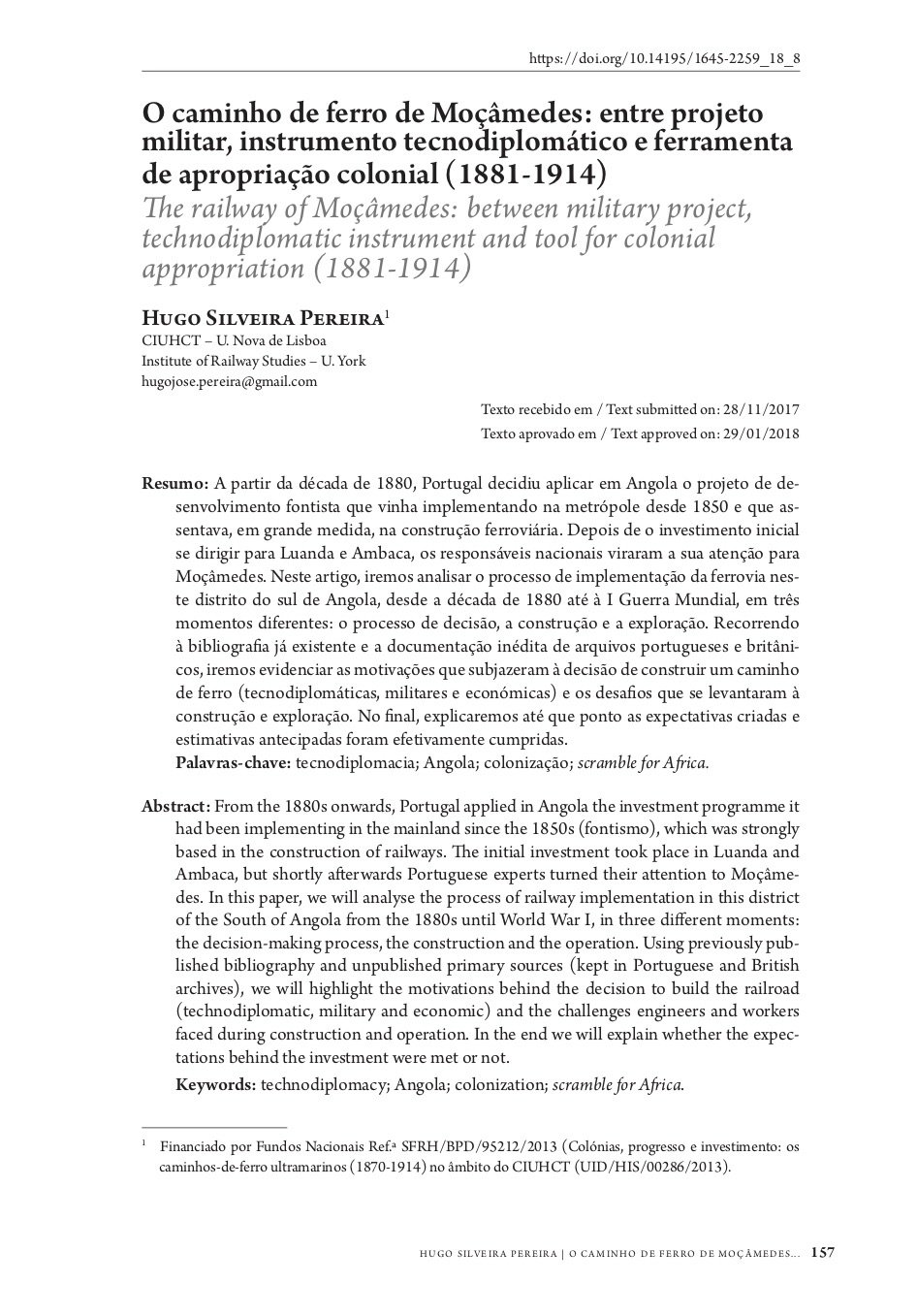The railway of Moçâmedes: between military project, technodiplomatic instrument and tool for colonial appropriation (1881-1914)
- Author(s)
- Year
- 2018
- Journal
Revista de História da Sociedade e da Cultura, Vol. 18
- Nr. of Pages
- 157-183

Resumo
From the 1880s onwards, Portugal applied in Angola the investment programme it had been implementing in the mainland since the 1850s (fontismo), which was strongly based in the construction of railways. The initial investment took place in Luanda and Ambaca, but shortly afterwards Portuguese experts turned their attention to Moçâmedes. In this paper, we will analyse the process of railway implementation in this district of the South of Angola from the 1880s until World War I, in three different moments: the decision-making process, the construction and the operation. Using previously published bibliography and unpublished primary sources (kept in Portuguese and British archives), we will highlight the motivations behind the decision to build the railroad (technodiplomatic, military and economic) and the challenges engineers and workers faced during construction and operation. In the end we will explain whether the expectations behind the investment were met or not.